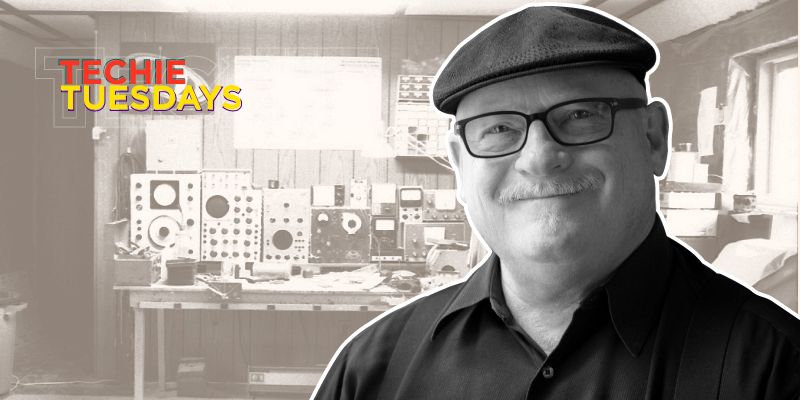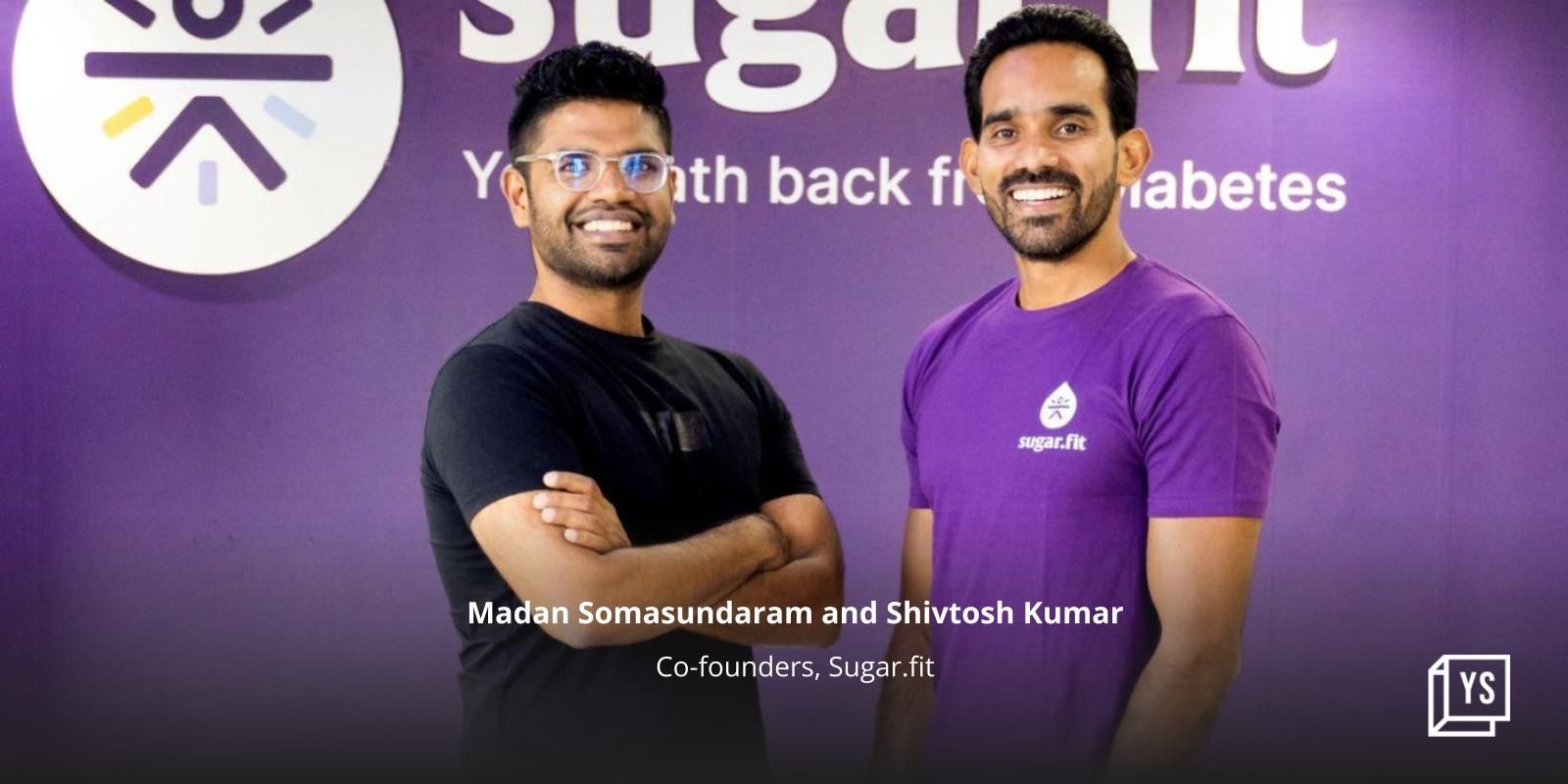The untold story of Alan Cooper, the father of Visual Basic
This is the story of Alan Cooper, a high-school dropout who went on to become the 'Father of Visual Basic', one of the most successful programming languages. His first startup built Silicon Valley’s first serious business software for microcomputers. The protagonist of this week’s Techie Tuesdays, Alan was a part of the tech revolution that shaped the destiny of giants like Microsoft. He narrates it all to YourStory.
Alan Cooper is known as the father of Visual Basic, a title given to him by Mitchell Waite, who wrote The Waite Group’s Visual Basic How-To, the first book written on the subject.
Always a little different from other kids, Alan grew up with the notion of the counterculture of the 1960s. Called a failure when he couldn’t finish high school, he took it as a challenge, and his out-of-the-box thinking led him to invent some of the most phenomenal software of his time. His journey is a gold mine of stories from the Silicon Valley of the 1960s-80s.

This week’s Techie Tuesdays covers many untold stories from early days of software industry in the US. It’s going to be a long read but it’s not every day that Alan Cooper shares his story. So, go on.
The kid who grew up in the counterculture of the 1960s
Alan was born in San Francisco in 1952. His family moved to Marin County when he was four. His mother had discovered the place before he was born and fallen in love with it. It was a bedroom community, a commuter's suburb to the north, on the other side of the Golden Gate Bridge. His father was an electrician. His was probably the poorest family on the block, but they were happy to be there.
Alan never liked rules or being told what to do. He says,
If you tell me what to do I'll do pretty much the opposite. That's who I am. If you draw a box, I'll step out of it. It's just the way I think. Sometimes it's been a very good thing and sometimes it’s been very bad.
He grew up in 1960s California, where the counterculture was at its peak. Counterculture didn’t mean taking drugs and going to rock and roll festivals. Alan explains, “It meant you didn't do what everyone else did. You found your own path, and you mapped your own course and life and did things differently.” There were a lot of people in the counterculture who explored craft, alternative ways of living, different sexuality, and politics. He adds, “Some of it was really terrible and some of it was good. Some of it, in hindsight, turned out to have been the paths that we should have taken.”
Alan pursued things that interested him—railroads, architecture, bicycles, psychedelic light shows. He also travelled a little, which helped him get some perspective.
Also read - How a hacker became a neuroscientist. Meet Moran Cerf
The high-school dropout
The biggest rulemaking and box-defining establishment for Alan was high school. He went to a high school in Marin County. He says, “The people who ran the school were pretty old school. They were happy to have students be progressive in their thinking as long as they 'behaved'.”
Alan being a misfit finally left high school without a diploma. Being a middle-class person in California in 1969 and being a high-school dropout was considered to be a failure. Alan says,
Nobody gave me alternatives, nobody gave me suggestions, they just said ‘Here's what you have to do, if you don't do it you're a failure’. There wasn't a lot of support and so I accepted that I was a failure.
He adds, “When I left school in 1969, I had long hair, dressed funny, and had goofy friends. I said, ‘Fuck you’ (to the world). I'm a failure. I'm proud of it.”
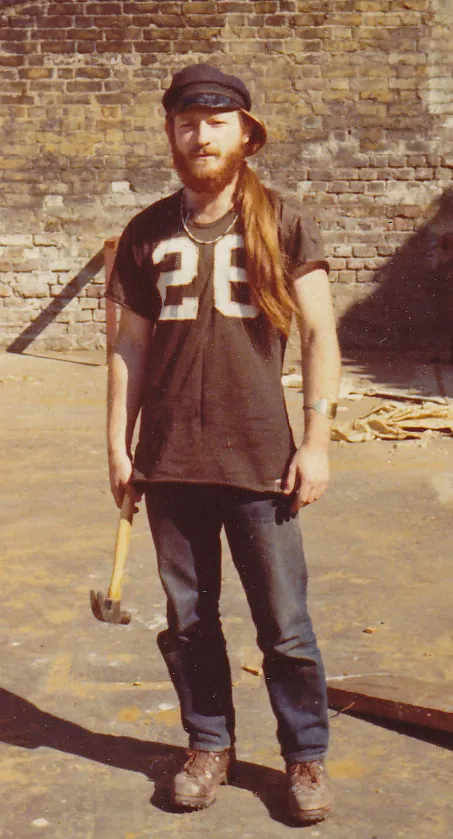
He got a job in a restaurant kitchen and stuck around until the realisation dawned that being labelled a failure didn’t make him one. Going back to architecture, one of his high-school interests, he read everything on the subject he could get his hands on. He then applied to the University of California to study architecture but without a high-school diploma, they wouldn't take him.
Observing a programmer friend, he thought it looked like an interesting job and thought of taking it up part-time to pay his way through architecture school. He went to the local community college that taught lower-division work and gave an associate degree after two years. Unfortunately, they also wanted to see his high-school diploma for admission. When he said he didn’t have one, they asked him to get a General Equivalence Diploma. Alan recalls,
“Nobody had ever told me about GED and that I could pass this exam to qualify for further studies. I was shocked and angry. I took the test and passed very easily. They said I could petition for a high-school diploma. I said I'll never ever get a high-school diploma. I'm proud of it. It's one of the greatest achievements in my life that I'm a high-school dropout.”
He believes the path he took wasn’t easy but was deserving of respect.
Related read - ‘We need better balance between theory and practice’, Bjarne Stroustrup, Father of C++
‘Acceptable’ behaviour is contextual
Alan enrolled at the College of Marin. He says, “It was the kind of school you got out with what you've put into it. If you went there with the voracious appetite of learning, they loved you.”
In high school, he had a voracious appetite for learning, just not for following the rules. In college, he behaved the same way as high school, the difference being that while it got him in trouble in high school, it now made him a well-respected member of the student body. This taught him an interesting lesson—context is what matters when it comes to behaviour.
From architecture to programming
Alan took a basic programming course to help him secure a part-time programming job. He soon realised that what he loved about architecture was programming. He wanted to design structures that had larger consistency and purpose and served people. It was about understanding technology and was immensely powerful. He fell in love with programming and computers and they became his world. He took every single course the college offered. He didn't go to any other classes and instead worked on his own projects.
One of his college mentors taught him programming at a much higher level than one would expect at that school. He got a work-study job of operating the big mainframe computers on campus (in college) and got paid $3/hour. He was also chosen by the college for advanced training in programming, which increased his knowledge by leaps and bounds.
He was highly influenced by an instructor who was a brilliant designer. Alan recalls, “He challenged every one of us and pushed us. He actually had a fairly conventional studio approach to design. He would come into the class and put an onion on the table and say, 'Draw the onion'. Then he would say, 'Draw the onion but only use horizontal lines'. Then he would say, 'Pretend you're blind and draw how the onion feels'. He would do this on and on until one had 100 different drawings of an onion. He would then critique and then have us critique. He even built a boat out of empty milk containers and got us to sail on it in the pond.”
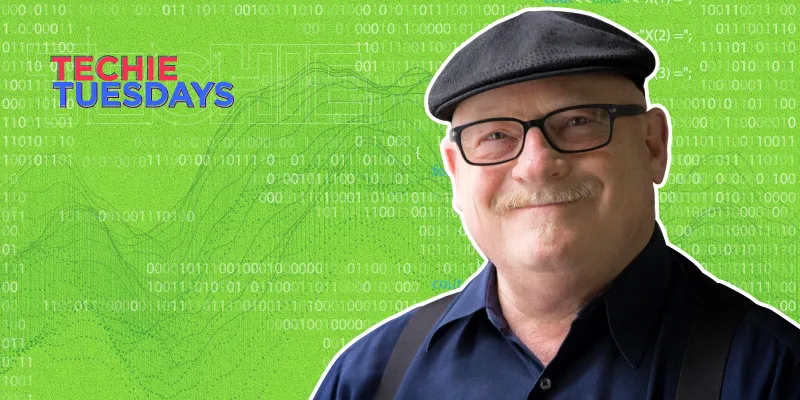
The programmer with the purple shirt, green tie, and long hair
Alan found a job in a shipping company, American President Lines (APL), where he learned a lot about programming and built applications in COBOL. He recalls a political battle in the organisation. He says, “This was in 1974–75. Data processing was beginning to eat companies. So, more money was spent on computers and programmers and not on shipping. And none of the guys who ran this shipping company had a lot of experience in the data processing business (what they called IT back then).”
There was a battle between the old guard and the young computer-savvy people. Finally, the old guard won by firing everybody. They brought in Electronic Data Systems (EDS) to take care of company’s data- processing needs. Alan adds, “EDS brought in a much higher level of professionalism and scholarship to the world of commercial business processing.”
A part of the deal between APL and EDS included offering jobs to all APL employees. Alan knew that EDS had extremely high standards but they were conservative. They gave three months to decide whether or not to join EDS. Alan recalls,
I was 22 years old with my hair long enough to sit on. I had a moustache and beard and wore funny clothes in funny colours.
He had some successes at APL so they knew he was a good programmer. But EDS had the morals of a Dallas, Texas company of the 1950s. Among their rules were no long hair, no facial hair, and no gay people. They said one couldn't be immoral which they defined as living in an unmarried situation, which Alan happened to be doing. One had to wear only white shirts and dark suits to office and keep the jacket on all the time. The only time one could take it off was when he/she was programming sitting at the desk.
For the three months when Alan had to decide, they didn't enforce any rules. So, he got to work for EDS the way he was. He remembers walking into their giant data centre in San Francisco with at least 500 employees in the room looking at him like he was an aberration when he untied his hair. They really wanted to recruit him and concentrated a lot of training on him. But their politics was reprehensible and their conservative approach was unacceptable to him. So, he resigned.
Related Read - Meet the co-creator of Julia programming language, Viral Shah
Co-founding Structured Systems Group
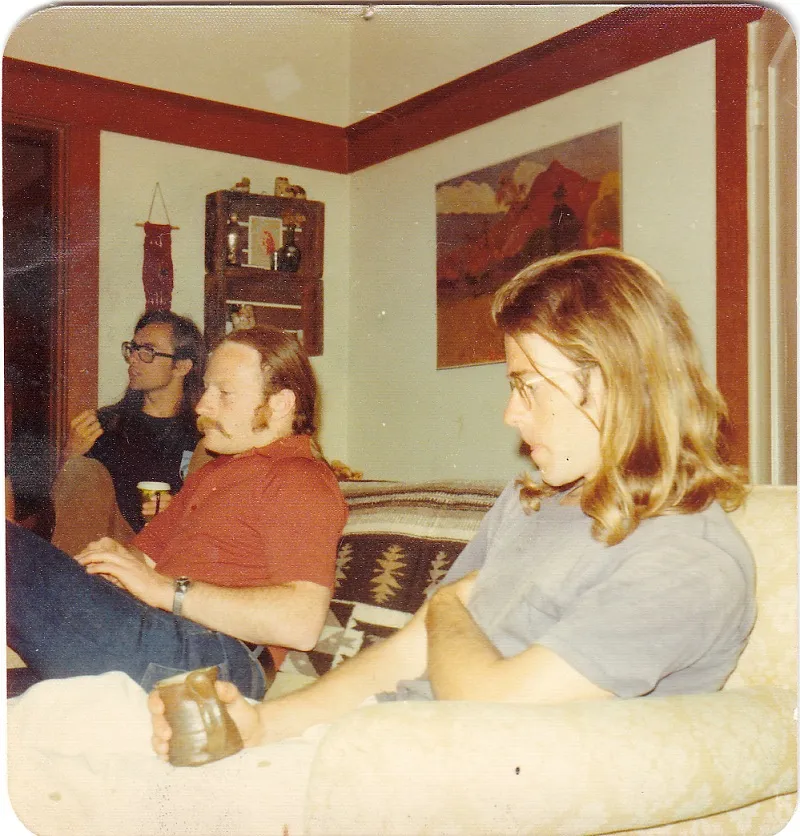
He went back to College of Marin to complete his graduation. He started concentrating on his design work and took all the design classes. He started adding the credits and realised he could get an associate degree in business data processing if he took one more class in the data processing curriculum. He took that and after another two years of work, graduated with an associate of science degree as business data processing programmer.
In 1975, Alan saw an advertisement of microcomputers being sold for $400, the first ones to be based on an 8080-chip (8-bit) microprocessor. He went to his friend who was a programmer working in a financial services company in San Francisco and the duo decided to buy one and start a business. They found an accountant who was planning to buy a mini-computer accounting system. They would write the accounting system on a microcomputer and then sell it to him for half the price ($10,000) of the mini-computer system. That was their business plan.
Alan and his partner put in $7,000 and started Structured Systems Group (SSG). Halfway through, they realised they didn't have to do the hardware. It was an old model and they could just sell the software. Alan says,
This was a novel idea. Nobody sold just software. IBM sold the hardware and gave the software for free. There were a few vendors out there that sold software for mainframes where you were basically buying a service contract and they delivered some software along with it.
Story of two geniuses - Gary Kildall and Gordon Eubanks
Alan learnt that the operating system (OS) was a problem. They discovered Gary Kildall, a professor at the naval postgraduate school in Monterey, California, who had written an OS called CP/M. They bought it. CP/M had some blind spots and limitations that it later became famous for. According to Alan, it should have been well known for its brilliance and its foresight and how technical and commercially advanced it was.
He says, “Everything after that has been modelled on it. Gary is the guy who invented the notion of the BIOS and BDOS which was splitting the OS into two pieces—one of them was hardware dependent and the other wasn't. This was the creation of the application program interface. While CP/M fell underneath the wheels of progress, the architectural design Gary pioneered lives on.”
He adds,
The person who capitalised on Gary's invention was Bill Gates. The technical vision Bill brought to Microsoft was Gary's. Gary certainly was no businessman then so he couldn't take advantage of it the way Bill did.
Gary was successful and built a successful company but if you compare a $100-million company to a $100-billion company, it looks like you're a failure. Gary was frustrated by how much success his idea gave Bill Gates. It's a bittersweet chapter in the microcomputer world. Alan says,
The story is repeatedly told incorrectly in the popular press. Bill Gates loves to tell the story of how he was just innocently building operating systems and Gary was building operating systems. When IBM came to visit, Gary was out flying his airplane and Bill Gates was going to talk business to them. That (story) falls in the category of 'winners write the history books'.
Gary had a student named Gordon Eubanks, who was a naval officer. Gary gave Gordon an old, broken copy of a basic programming language that he had worked on a couple of years before. He asked Gordon if he could fix it and make it work (that would be his thesis). Gary's old language was called BASIC and Gordon named it BASIC-E after reworking on it.
Also read - Meet Vijaya Kumar Ivaturi, the ex-CTO of Wipro, who’s ‘not business as usual’
BASIC-E to BASIC-EK
Alan and his partner thought they could run BASIC-E on top of CP/M. They had what they needed at that point to build accounting software. They started building it and immediately realised that BASIC-E was very limited. For example, it didn't have any fixed decimal arithmetic. It didn't have any structured programming constructs. It still used the syntax of the original BASIC and was full of bugs. They called Gordon and said they wanted to fix this. He was a little skeptical because there were a lot of hobbyists who were talking big those days.
They showed up on Gordon's doorsteps and he finally relented and gave them the source code of BASIC-E, except that there were two problems:
- Source code was in PL/M, which was a proprietary language owned by Intel. PLM compilers ran only on Intel's development machines, which cost $25,000. There was no way Alan and his partner could afford one.
- The source code was given to them in the hard copy (300 pages of printouts).
They went home and started exploring the code. They figured out 10 nasty bugs, which meant it wasn’t a good platform for real development. With help from Gary, they got some compiler equivalents, some core dumps, and were able to recognise the key bit patterns of what compiler PLM looked like. Alan recalls, “We were able to go into the core dumps of BASIC-E and identify the passages and source code in the compiler object code. So, we were able to debug in 8080 machine code the bugs that Gordon had put into the PLM source code.”
They figured out assembler language patches to it and hot patched the object code. Alan explains,
“What we did was when something was computed incorrectly inside BASIC-E, we would jump to the end of the code where we wrote the code correctly and then we would jump back. It was the worst kind of jury-rigged crap you'll ever see but we fixed the bugs. We were able to do it without a PLM compiler.”
They called the patched version BASIC-EK (based on Alan’s partner’s last name) and sold it for $25. Alan wrote some documentation for it. They met Gordon again at the West Coast Computer Faire.
First company selling application software for microcomputers
Gordon was hired by RadioShack to make a commercial version of BASIC-E. Alan and his partner helped Gordon design and eventually build what became later on CBASIC. It was the commercial version of BASIC-E. Gordon sold the non-exclusive rights of CBASIC to RadioShack. Since Gordon had to leave for duty on a submarine, he asked Alan and his partner to sell the programming language. They sold it for $100.
Meanwhile, they were still working on the accounting system and now had a much more powerful language to build it. Alan wrote a batch processing general ledger accounting system. He recalls, “We needed to sort records. This was a small computer with small memory. We had floppy discs that held 160K. We needed to be able to sort a data file that is of at least 160K inside a computer that might have 16K or 32K of memory and much of it was already used by OS.”
He adds, “We needed a multi-facing sort of merge where you would read some of the data, sort it, and then write it out temporarily. Then you read the next chunk of data and sort it and write it temporarily. Then you do the same once more. Then you look at those three temporary files and you take the lowest and the next lowest and next lowest and merge them in and you write that out. That way you can sort data bigger than memory.”
When the general ledger accounting system was ready to be shipped, Alan and his partner didn't know what to charge for it. He says,
We had no idea. Nobody was selling software. Certainly nobody was selling software for microcomputers. We could have sold it for $10, $100, or $1,000. So, we asked for $1,000, because why not. If it didn't work, we could try a different price.
SSG became the first company selling application software for microcomputers. They built a dozen products around accounts receivable, accounts payable, payroll, inventory, and games software. Since the company was cash constrained, Alan suggested that they onboard another partner with money to grow bigger. His business partner wasn't interested and they began to argue. Alan was still 24. Naively, he thought one could just go out and start a company and be a success. So, he sold his interest in the company for a ridiculously small sum of money which he never got. That's why he doesn't mention his partner’s name.
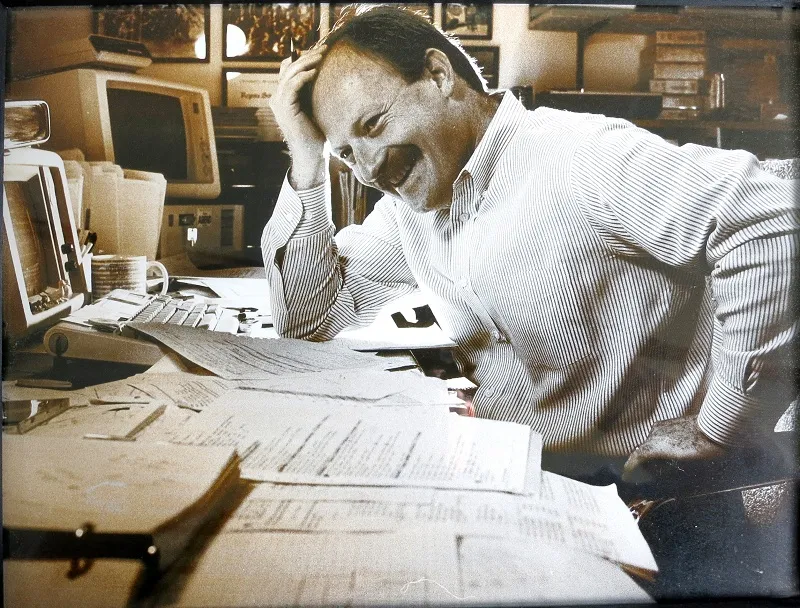
Reinventing the human-computer interaction
Alan worked hard on developing the second software (accounts receivable) but people didn’t like it. He recalls,
They said it's different. It behaves differently. All the commands, screens look different. I said ‘But it's better’. They said, ‘But it's different’. At that moment, I realised there was something I hadn’t seen before. They were not looking at it in terms of if it was better or more powerful. They had to memorise a bunch of crap and now they had to memorise a bunch of crap that was different.
Alan hadn't seen this world before, the world of human-computer interface (HCI). He took it for granted. He started thinking about user experience design and how people would react. Everything he did was based on how a user approaches the product. He hadn’t read about HCI so he didn't know it was already a discipline. He invited people over to his office to play with the software and paid for that. He says, “I took sheets and draped everything in the room, so the only thing they could see was my computer sitting there. I would ask them to do some basic operations using software and would observe them and ask questions—what does it look like to you? What do you think you're supposed to do now? I sort of reinvented another wheel which was user testing but it was pretty radical at that time.” It changed the way he designed his software.
Hawk among the sparrows
IBM released the PC in 1981. According to Alan, it wasn't a great computer. He says,
“It was nothing earth shattering. It was fairly conventional and it used a lot of off-the-shelf parts and software but it was a hawk among the sparrows in the marketplace. IBM was a giant and its commercial, academic, and engineering clout was second to none. When they shipped their PC, hundreds of companies died within a couple of months.”
This included Alan’s financial backers and his only client. He paid his bills and shut the doors, with no idea about what came next. At this point, Microsoft had been charging ahead and growing. They were hooked to IBM (by selling the OS to IBM). When IBM exploded, Microsoft exploded. Although IBM kicked Gary and Gordon to the curb, they had arguably better technology, on the basis of which they joined forces. Gordon joined Gary's company Digital Research. They got venture capital and decided to take Microsoft on.
Gary asked Alan to be one of the founding members of the R&D department at Digital Research. He told them that he doesn't want to program and will work with programmers who code. They agreed and even offered his wife a job in marketing. Alan moved to Monterey to work with Digital Research.
After a few months, Alan realised that he was merely writing business plans for products that he wanted to invent and build. Unfortunately, the R&D lab couldn’t achieve a lot because his business plans couldn't be taken ahead. He argued and fought only to realise that the company said yes to him but didn't understand what he was asking for. He quit.
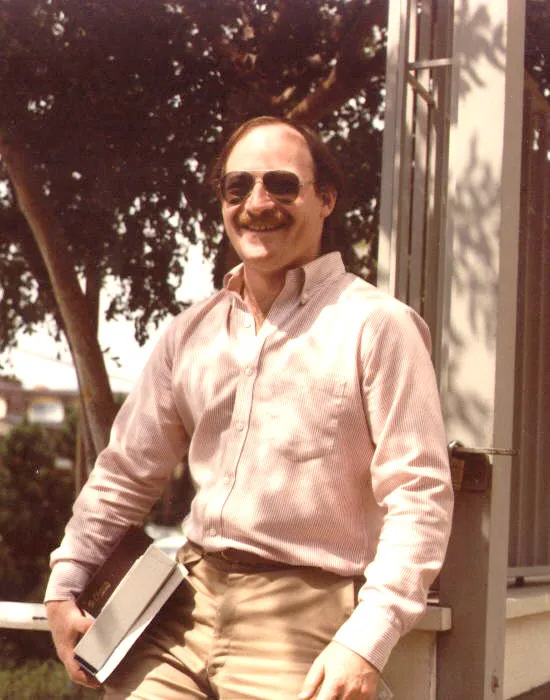
Build-sell-repeat
Before leaving Digital Research, Alan wrote a list of five programs, each of which could be a million-dollar business. After quitting, he took the first one and started building it himself. It was a critical path management project management program. He sold it to Computer Associates (CA) in New York City for one lump sum amount (and no royalties).
He then started working on his next product. He says,
I didn't make a lot of money but really enjoyed my experience. If I wanted to make money I would have started another software company. I really liked inventing software.
He then wrote a serial communication program and sold it to a publishing company in Berkeley. After that, he started working on a geographical information system (GIS) that never went anywhere. Then he got distracted by Microsoft Windows. He recalls, “For my GIS I needed to work on a multi-tasking graphical environment. That didn't exist then. Macintosh had a graphical environment but wasn't multitasking. Digital Research had rudimentary multitasking but it wasn't advanced. So, I started writing my own multi-tasking graphical environment which was really silly because I was not an OS or compiler guy.”
You may also like - Sandipan Chattopadhyay — the statistician behind the 160x growth of Justdial
Microsoft—No, no, yeah, okay!
Against Alan’s wishes, his friend dragged him to attend Microsoft’s technical conference being held in Mountain View, California. Steve Ballmer spoke about graphical subsystem Windows, graphical subsystem dynamic communication and dynamic relocation. This means that Alan’s six months of work towards building an OS with better memory management dynamic relocation was in vain. But he also realised that he was building a layer on top of an OS.
He says, “There was no love lost between me and Microsoft but they were giving me what I wanted. So, I became a Windows user.”
He started to play around with Windows version 0.87 beta software. Alan says, “The thing that leapt out at you about Windows was the shell, the finder. It was a program called MSDOS.xe and it was very clear that somebody had written it in a weekend. It was not graphical. It was text based and just stupid and ugly and offensive. Here they were saying they were a graphical platform. Their front- end was terrible. It was an embarrassment. It became a laughing stock.”
Making of the ‘visual programming language’
He started thinking about how to write a shell that's easily used and is powerful and interesting. He found the solution—the right way to build a shell is not to design a shell but to design a shell-building toolkit. He called it a shell construction set (because of his love for architecture). Armed with that vision, he started building a visual programming language.
He visualised it having the basic control. He explains, “We could start with a window and put push buttons on it. We could have lists of files, data, and get checkboxes or radio buttons. And you could wire it together. You could put a push button on window down and then click on the push button and drag an arrow to the window and when you push the button, you could program an action on that arrow. So, when you pushed the button down it would take that action on that window. So, it was a visual programming language. The way it worked was it had a palette on one side, so you could click on the palette and drag-push button or drag a checkbox and drop it on your operating window.”
He then got the idea of making each one of those controls in the palette independent. Each one of them was a dynamic link library. The program, when started, would send out a universal message saying, 'Does anybody speak my language?'. Then a DLL which would recognise this message would respond whereupon Alan’s program called 'Ruby' would say 'What can you do', 'What's your icon', 'How do you spell your name' and then it would populate the palette with the icon. The world of gadgets that you could program with its visual programming language was extensible by third parties. Because of linked dynamic run time, it was an open API for third-party vendors.
It had a rudimentary language and a very simple syntax. It was doing what OS shell would do—move files around, delete files, etc. But Alan was keen to make this dynamic. So, the language was primitive but dynamically extensible. When Alan showed it around to Adobe, Lotus, and others, they suggested he sell this to Microsoft. None of them wanted to work on it because it meant they would be competing with Microsoft.
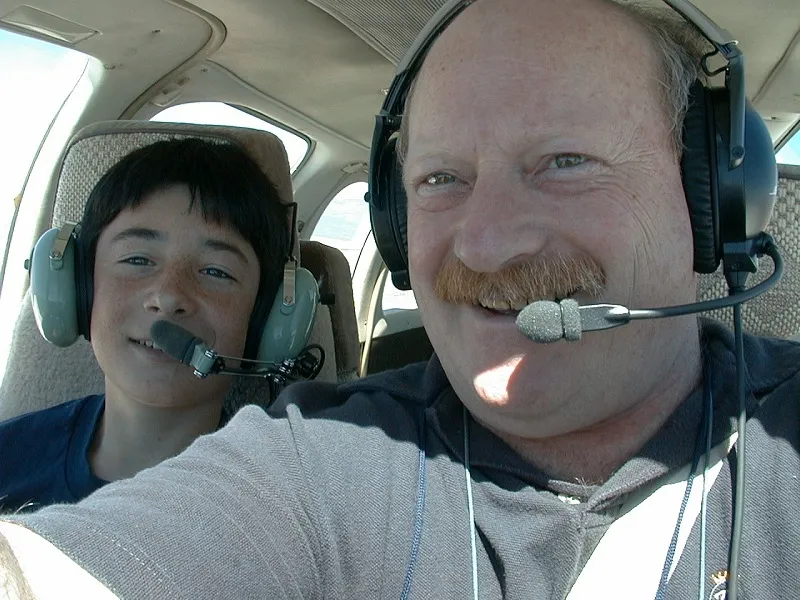
It's magic, Bill!
Finally, Alan approached Microsoft fixed up a meeting with one of Bill Gates' lieutenants, Gabe Newell. He flew up to Redmond to give him a demonstration. Five minutes into the demo, the lieutenant said, ‘Bill will see this’. Alan then met Bill after a couple of weeks. He recalls,
Bill came with a dozen followers. I started demoing my shell construction set to Bill. He had never seen any such thing on the Windows platform before. I had done real sprite animation using bitlets on screen. Microsoft had not been able to do that. When he asked how I did it, I said, 'It's magic, Bill.'
Also read - Meet Sauvik Banerjjee, a Ranji trophy player who went on to architect Reliance Jio
The birth of Visual Basic
Alan sold it to Microsoft and it was going to be the shell for Windows 3.0, which was the next release. At that time, Microsoft ended its relationship with IBM, a move everyone thought would hurt the former. To everyone's surprise, it was IBM that was hurt and Microsoft went on become a big success.
Ruby was the shell for Windows 3.0, the first commercially viable release of Windows. Windows was not a main strategic product for Microsoft then. It was kind of junior program. The big one was OS 2 which they were building for IBM. The OS 2 guys were deeply jealous of what the Windows guys were doing and it became a huge internal battle and one of the battlegrounds was Ruby. And the OS 2 guys would not allow Ruby to ship with the Windows release. Ultimately, OS 2 died and Windows won. But in the middle of that battle, Ruby became an orphan within Microsoft, and nobody knew what to do with it.
Bill finally took Ruby and asked the languages guys to figure something out. In 1989, QuickBASIC, Microsoft's flagship language, was dying. The hobbyists were using PASCAL and the pros were using C and nobody was using QuickBASIC because it was not a p-code compiler interpreter BASIC. It was straight interpreter BASIC and just old.
Because Alan made it dynamically extendable, it was statically replaceable also. Microsoft unplugged Alan’s language and replaced it with QuickBASIC and thus Visual Basic (VB) was born.
VB was the first product shipped by Microsoft that was both a commercial and critical success in the 1.0 release. Windows took four releases before people thought it was worth a dime. When Alan and Bill signed the original contract, Bill said it was going to have a profound impact on Microsoft’s entire product line. Alan thought that was hyperbole but his visual programming language and its dynamic appendages combined with QuickBASIC became one of the most powerful and successful languages ever written.
Meet the father of Visual Basic
By 1990, the mainframe computer industry was breathing its last. The careers of all the old COBOL programmers, the guys who Alan had originally worked with, were over. They knew COBOL but knew nothing about microcomputers. CBASIC and microcomputers were taking over. All of a sudden, with VB the COBOL programmers found a bridge to the microcomputer marketplace. So, thousands of programmers who were going to become obsolete and unhireable found a new life in their career. Alan says,
“I've made peace with VB and I realise there is an important lesson to be learnt that brilliant ideas are only part of the solution. We need to have the right mix of brilliant ideas for the right people at the right time. As much as I hate to say it, Bill Gates was right to take my visual programming paradigm and marry into the programming language rather than a shell, although I wonder in an alternative universe what that shell would have been like.”
Alan tried raising money to build some software but nobody wanted to hear his story. His old friend Mitchell Waite, who is an author and publisher, noticed ‘Cooper Software’ in VB’s ‘about’ box, and called him to ask if it was him. On learning the whole story, he called Alan the ‘father of Visual Basic’ and dedicated it to him when he published the very first textbook on the subject.

Cooper Interaction Design
In 1992, Alan started consulting. He helped companies design their software. A couple of his friends hired him to do an analysis of their product and revamp the way it behaved and the way it faced with the user. By this time, VB had become an enormous success, and it was the beginning of the reputation Alan has developed today.
Looking back, Alan feels that VCs rejecting him was probably the best thing that happened. He was happy to be a consultant. He says, “As a developer, you could always get lost in the code. I said I was just going to design. I started to ask some of these fundamental questions like: why do I think this is the way a program should behave? What are the reasons?”
He also started looking for some logic behind his rationale. Finally, he concluded six principles of software designs:
- Efficacy: Achieve the users’ goals
- Conceptual integrity: Conform to a single unifying vision
- Grammar: Communicate by combining a few primitives
- Mapping: Make the control, convey its use
- Trustworthiness: Design so users gain confidence and trust
- Engagement: Add the human touch
When Alan turned author
In 1995, he started working on his first book based on his learning from the three years of consulting The book was titled About Face: The Essentials of User Interface Design.
He never thought he’d write again but just three years later he was on his second. He believes that a good interaction design should follow a goal-directed process, which is based on who your user is, what their desired end state is, and what motivates them to get there.
Also read - Shahani Markus: the woman techie who packs a punch
The pattern of the industry
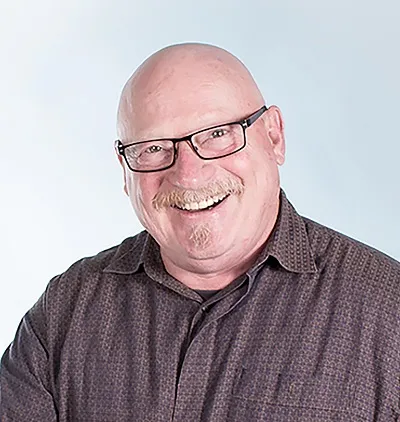
According to Alan, the tech industry pendulum swings between diversity and inventions and consolidation and contraction. In the early days, building a commercial software was a pain. Then came MS-DOS from IBM and all of a sudden, there was a lot of commercial development and lot of money made. A lot of creativity and diversity went backwards then.
Later again creative stuff started to develop and then came Windows which brought a huge consolidation in the industry. All of a sudden, guys who were using little graphical platforms started using Windows. Huge consolidation took place and in the 1990s, everybody wrote to Windows and Apple lost all its market share and became irrelevant. That was great for commercial software because you had a dependable, stable platform you could write to, you knew what it did, and it did not stop doing it all of a sudden.
So, the pendulum swings and then with the World Wide Web came the explosion of diversity. Now, anybody could do anything. The original browsers were awful and ugly. But the explosion of creativity was astonishing and now there are computers everywhere. Then the consolidation began and platforms started forming up. It became really good for commercial success but bad for diversity.
At this point, Alan is not sure if the pendulum is at diversity and creativity or at consolidation and making money. He has a point to make when it comes to innovation today,
“When I see companies, I see the innovation that is being done is by guys like Elon Musk, who says ‘I have to spend a billion dollars to do that’. In the meantime, the venture capitalists are still following their slave labour exploitation model. When will they figure out that does not work? I mean the stories of miserable entrepreneurs have far outnumbered the stories of successful happy entrepreneurs.”
Today, the happiest and most successful entrepreneurs seem to be the ones who have matriculated to being venture capitalists. Alan says, “It’s like senators become lobbyists become senators become lobbyists become senators. It’s a revolving door. You see the same thing, you see entrepreneurs becoming VCs and VCs becoming entrepreneurs. And it’s not really a world that's open or about innovation as much as it's about appealing to people’s dreams and telling them stories that they believe.”
Living the Oppenheimer moment
According to Alan, we are living in the Oppenheimer moment today. Robert Oppenheimer was the guy who in the 1940s was chosen by President Roosevelt to head the Manhattan Project, to develop the atom bomb to win World War II. He was a brilliant scientist, a young guy with great credentials, great skills, and great intellect. He was given an unlimited budget and power. Under his leadership, the Manhattan Project successfully invented the atomic and hydrogen bombs, which were dropped on Japan. When he watched the explosion for the first time, he was shocked and wondered if it was what we really want. That was the Oppenheimer moment.
Alan says, “We have been told the technology and software world is a huge success and it’s the biggest market in the world, there is tons of money, tons of opportunity. We are all connected and we all have this power in our pocket. And we have built this incredible world of information and media, social media, interconnected. Like Oppenheimer all of a sudden, we discover that the Russians can come in and use it to control the United States of America. We discover that people who are our friends can infiltrate our systems, can propagandise us, steal from us, and can hijack our social systems with these wonderful tools that we have built. This is our Oppenheimer moment.”
Alan will be teaching a course at University of California, Berkley this coming semester. He’s planning to title it ‘Thinking like an ancestor’ because he believes that you can make your day-to-day decisions by asking what makes me a good ancestor, what can I do today that is going to create the most benefit for my grandchildren?
The class will cover the mental frameworks we need to be able to wrestle with our Oppenheimer moment. He’ll take a systematic approach to create a rule book and teach people who do cannot discern between right and wrong.
Also read - Meet the chief architect of Aadhaar, Pramod Varma
On programming languages
Alan thinks the programming language has been the same for the past 40 years. They do the same thing and there is no difference between them. He says,
“You can look at all these different languages and point to all the differences but the differences don't mean much.”
A few years ago, Alan started working on something interesting but his code was repeatedly crashing. He started pulling out his code and testing it but couldn't find the problem. Finally, he started testing .NET and realised that was where the issue lay. It was using the same code for the past 20 years. They hadn't rewritten the kernels. His program was crashing because he was asking .NET to do what the rulebook said it couldn’t do. Programming languages don't let you express outside of what they expect you to want. He says,
I am very underwhelmed by the languages I see. None of them are particularly good at doing anything that is particularly different; they are all really the same. This is the problem with languages. Bill Gates took somebody else’s language and gave it his touch. Scott McNealy and his partner at SUN Microsystems wrote their version of Unix, which became Berkeley Unix.
Alan believes we need something that hasn’t been done before. He adds, “VCs say you can build stuff overnight. Yes, you can build things overnight as long as it is the same thing somebody else built 10 years ago. But if you really want to build something different today, it is really hard.”
Alan thinks the operating systems and the programming languages are in the same groove and doing the same things they have always done. He asks, “Why is there no programming language that tells me what my social media application is learning about me? Why can’t I get three-dimensional graphics of that in 10- minutes? I am talking about very simple text processing here.”
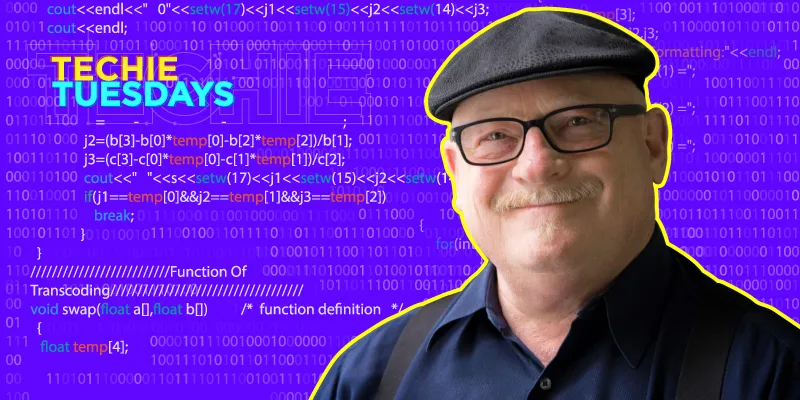
Be a good ancestor
Alan wants everyone to be a good ancestor. He expects everybody to think about how bad people misuse code and what can be done to fight it. He says,
Ask if you are doing something that will make you money or something that will make your children more successful and your grandchildren happier. Are you taking away from the resources of the world or adding to them?
You can visit his website or connect with him on Twitter.






